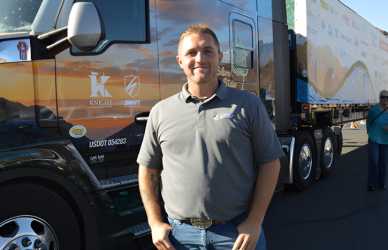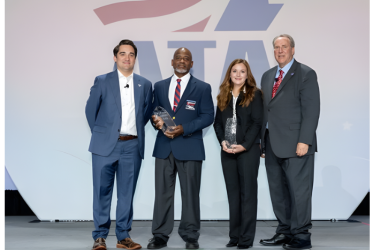Schneider National Inc. has completed an electric charging depot at its South El Monte Intermodal Operations Center in Southern California. This depot will power its battery electric truck (BET) fleet, which aims to include nearly 100 Freightliner eCascadias by year’s end, generating one of North America’s largest zero-emission fleets.
This charging site is over half the size of a football field, with 16 350 kW dual-corded dispensers that can charge 32 trucks simultaneously. The eCascadias will be able to achieve an 80% charge within 90 minutes.
This investment in sustainable technology is a huge step forward for Schneider National and its environmental goals.
“Schneider decided to lead the way by building our own depot in South El Monte,” said Schneider President and CEO Mark Rourke. “It was important to develop onsite charging because it is the most efficient solution to power our growing electric fleet. With the infrastructure deficiency, we found that we needed to collaborate with a wide array of experts to see our vision come to fruition.”
Schneider’s conveniently located facility is in the heart of metro Los Angeles – with easy access to major highways and a dense concentration of customers within 50 miles. This year, Schneider is proud to have started hauling deliveries for Frito-Lay North America and Goodyear with their new eCascadia fleet. These zero-emission trucks have an impressive range of 220 miles, supporting the companies’ supply chain sustainability goals.
Schneider’s South El Monte site was funded through the Joint Electric Truck Scaling Initiative (JETSI), a state and local project aimed at increasing the number of zero-emission heavy-duty trucks on the road. Working alongside other environmentally focused companies, including Black & Veatch, Schneider has designed an operationally efficient layout to ensure seamless transport logistics and a positive impact on the environment.
“This 4,900-square-foot state-of-the-art electric truck charging hub is a monumental testament to innovation and collaboration,” said Dave Hallowell, Black & Veatch president of the connectivity, commercial, and industrial sector. “The collaboration between Schneider and all the project partners will result in new employment opportunities for the area, along with a significant reduction in pollution.”
“We know the future of sustainable transportation includes electric. That is why we invested and collaborated with stakeholders along the supply chain to work together to create this infrastructure and ultimately lower carbon emissions. This would not be possible without our funding and grant agencies,” said Rourke.
Schneider collaborated with Daimler Truck North America to help improve the eCascadia truck, by piloting it for six months in 2019-2020 through Freightliner’s Customer Experience fleet. Based on the feedback received, the company introduced the BET that is currently being used in their fleet.
Schneider has already received a third of the anticipated 92 BETs and upon completion, they have the potential to eliminate over 81,000 pounds of carbon dioxide emissions each day, equivalent to removing around 2,400 gas-powered vehicles off the road. These zero-emission trucks will significantly contribute towards Schneider’s goal of reducing CO2 emissions by 7.5% per mile by 2025 and a 60% per mile reduction by 2035.
Source: TruckersNews











